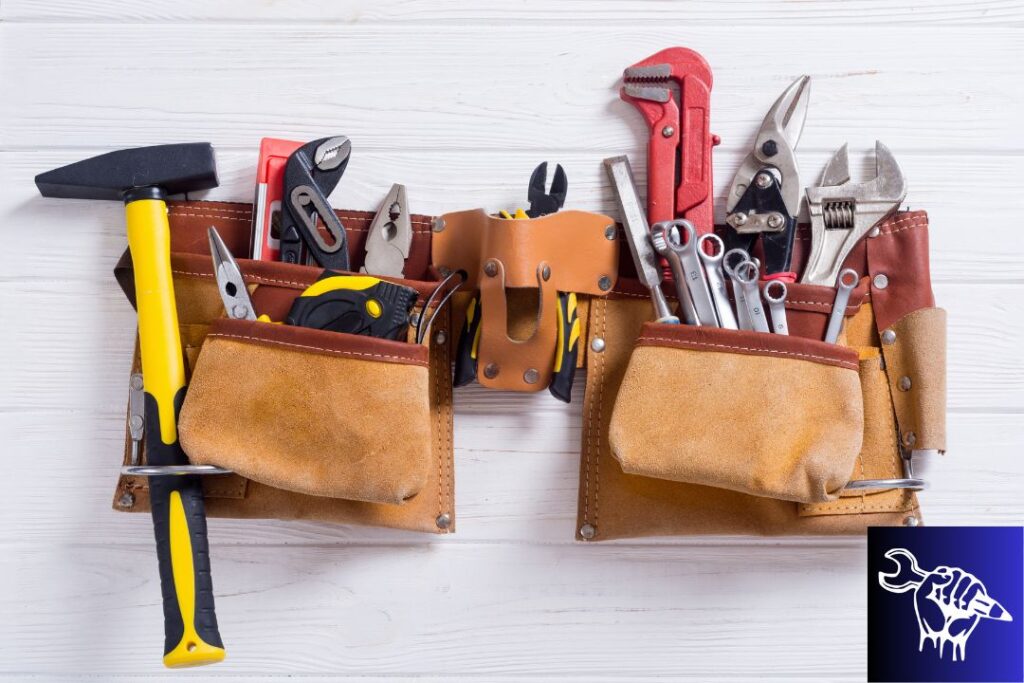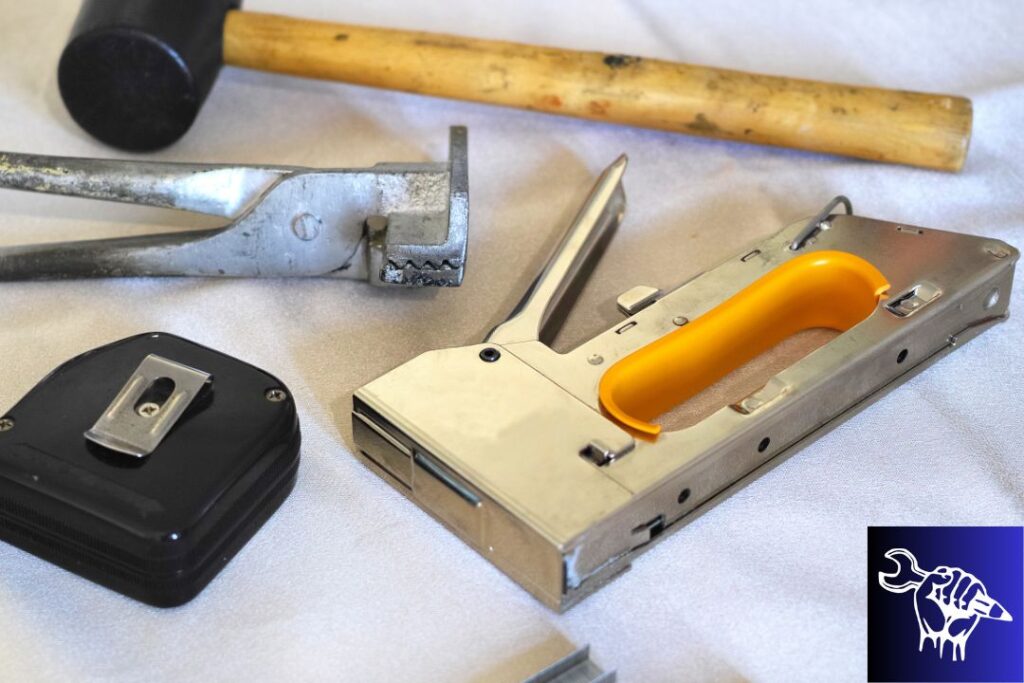Are you preparing for a roofing project? Quality tools for roofing are essential for a successful project, as they will allow you to complete the job quickly and safely. To make your next project a success, read on to equip yourself with the best tools.
Something to hold your tools

When engaging in Roof Replacement, it’s crucial to recognize the potential hazards associated with ascending and descending ladders or maneuvering on the roof. Carrying tools by hand or inside the toolbox can compromise your stability and equilibrium, heightening the chances of accidents. A tool belt plays a pivotal role in keeping your hands unburdened, enhancing your control and minimizing these risks.
Roof-related tasks often entail transitioning between different sections of the roof. A tool belt provides a convenient means of keeping your essential tools within easy reach, significantly streamlining your workflow. This eliminates the need for frequent ladder climbs and descents to retrieve your tools. The scope of roofing projects typically encompasses a diverse range of tools, including hammers, nails, roofing nails, utility knives, measuring tape, and more.
A tool belt comes equipped with designated pockets and slots, offering effective organization for these items. This organization facilitates quicker access to the tools you require precisely when you need them. Moreover, the risk of tool drops while working on the roof can pose a substantial hazard, endangering both yourself and those below. A tool belt ensures that your tools remain securely fastened, significantly reducing the likelihood of inadvertent drops.
Also from roofing niche: Is slate roof a good choice?
A hammer tacker

A hammer tacker, also referred to as a staple hammer or roofing stapler, proves indispensable for roof replacement due to various compelling factors. Hammer tackers boast a design tailored for the swift and effortless securing of roofing materials like underlayment, felt paper, and even shingles in certain cases. They facilitate a considerably faster pace of work compared to the manual process of individually hammering staples or nails. When compared to the physically demanding task of manually hammering in staples or nails, employing a hammer tacker is notably less strenuous. This translates into reduced hand and arm fatigue, making it feasible to engage in prolonged work without experiencing discomfort— a valuable asset for roof repair and maintenance tasks.
Roofing maintenance projects often consume a significant amount of time. Utilizing a hammer tacker can substantially expedite project completion, making it especially advantageous when striving to finish roof maintenance services promptly or preemptively address potential weather-related concerns. Hammer tackers are a favored choice among professional roofers due to their inherent efficiency and effectiveness.
You may be also interested: 4 common causes of pipe leaks
Ladder

A ladder is a crucial tool for roof replacement services, particularly when dealing with ice damming. It allows you to access and inspect your roof, address damage caused by ice dams, and implement preventive measures to reduce the likelihood of future ice damming issues. A ladder allows you to reach the problem areas on the roof’s edge where ice damming is most likely to occur. Roof repair and maintenance often involve inspecting the entire roof for damage, leaks, or worn-out materials. A ladder provides safe and convenient access to different parts of the roof, allowing you to thoroughly assess its condition.
Ladders enable you to get up close to the roof’s surface, making it easier to identify even minor issues like damaged shingles, cracked flashing, or areas with poor drainage. Spotting these issues early on is vital for prompt repairs and preventing further damage.
Tape measure or laser tool

Precision is crucial in roofing projects to ensure that materials fit perfectly and that the roof is level and symmetrical. A tape measure or laser tool allows you to take accurate measurements of various components, including the roof’s dimensions, angles, and distances between critical points. This accuracy is essential for cutting materials to the correct size and aligning them properly during installation. Before you begin your roofing project, you’ll need to calculate the amount of roofing materials required, such as shingles, underlayment, or flashing. A tape measure or laser tool helps you determine the exact surface area and dimensions of your roof, enabling you to purchase the right amount of materials and avoid wastage.
Recommended for constructors and designers: Pros and cons of wooden windows
Safety gear and a fall protection kit
Roof replacement involves working at heights, which can be extremely hazardous. Safety gear, such as a harness and lanyard, is designed to prevent falls. It allows you to secure yourself to a stable anchor point on the roof, minimizing the risk of accidents and injuries caused by slips or trips. Your well-being is paramount when working on a roof.
Safety gear, including a helmet, gloves, and sturdy work boots, protects you from potential hazards such as falling debris, sharp objects, or accidental contact with electrical components. It reduces the risk of head injuries, cuts, and other injuries. Accidents can happen even with the best precautions in place. Safety gear, such as a harness with a shock-absorbing lanyard, can prevent serious injuries in case of a fall. It provides a lifeline and can slow down a fall, allowing you to regain your footing or wait for help.
Remember, hiring professional roof replacement services can improve your home’s energy efficiency and curb appeal.










